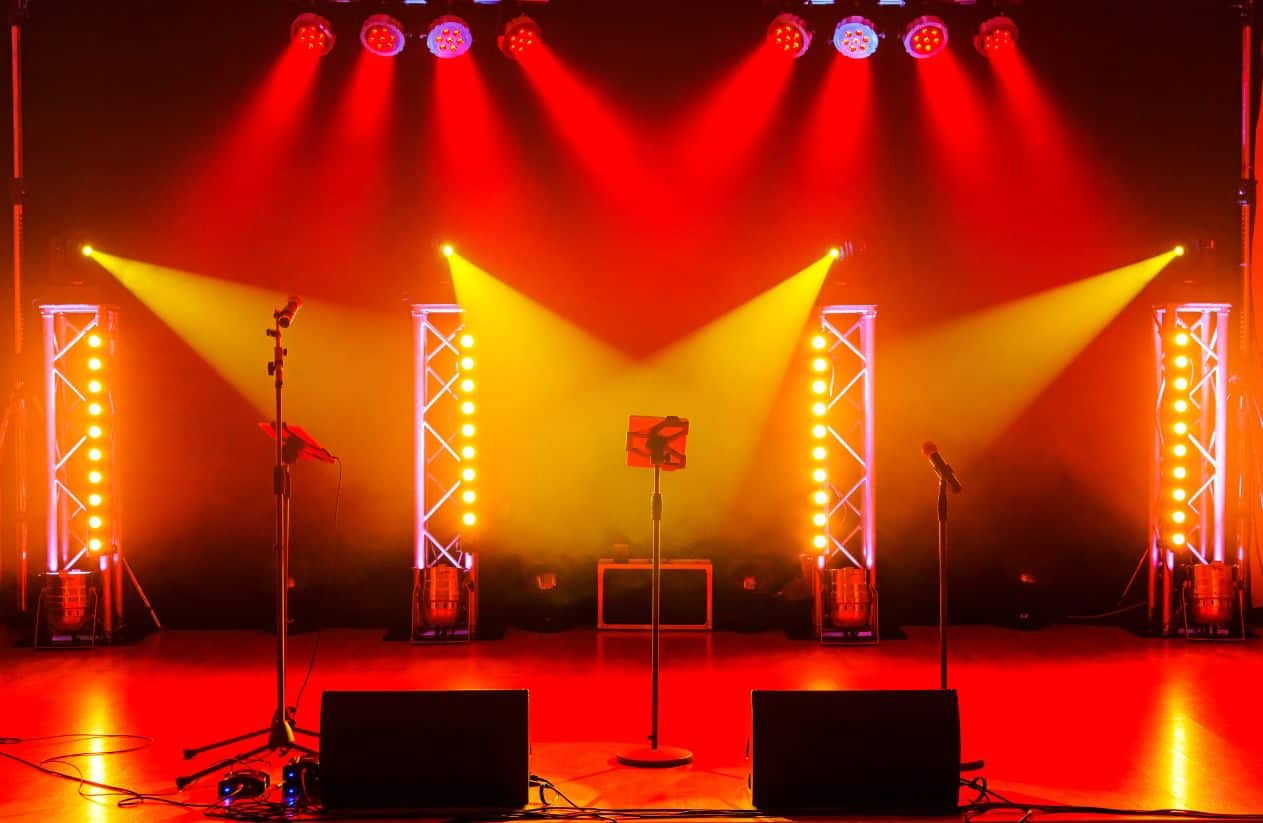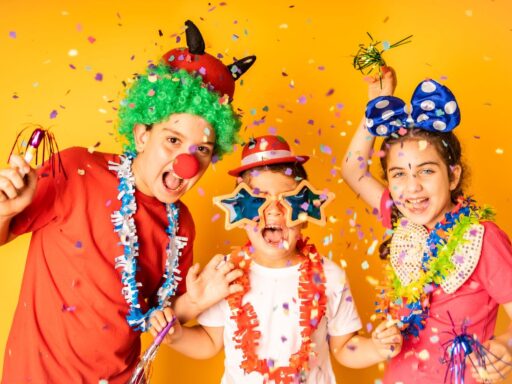Ever been to an event where the energy just wasn’t there? You know, the kind where you’re politely counting down the minutes until you can leave? Often, a lackluster stage setup is the culprit.
Think about it: the stage isn’t just some platform. It’s the visual centerpiece, the heart of your event, and the launchpad for creating those unforgettable moments. A well-designed stage draws your audience in and sets the tone for the entire experience. Whether it’s a corporate conference, a rockin’ concert, or an intimate wedding, nailing your stage setup is crucial.
This guide goes beyond the basics. We’ll explore five key elements to help you craft a stage that elevates your event and leaves a lasting impression. From understanding your audience to mastering lighting and sound, we’ll ensure your stage setup is a success.
Know Your Audience: Creating a Stage that Resonates

The foundation of any successful event, and especially crucial for effective stage setup tips for a successful event, is deeply understanding your audience. It’s not just about knowing their age or job title; it’s about tapping into what makes them tick.
To truly connect, you’ve got to move beyond basic demographics and explore their psychographics – their values, interests, lifestyles, and attitudes.
Here’s how to get those deeper insights:
- Surveys: Don’t just ask about age and location. Ask about their expectations for the event, what kind of stage design resonates with them, what their favorite events have been, and what elements made those events memorable. Use a mix of multiple-choice and open-ended questions to get both quantitative and qualitative data.
- Social Listening: Dive into the online conversations happening around your event or similar events. What are people saying? What are they excited about? What are their pain points? Tools like social media analytics platforms can help you track relevant hashtags, keywords, and discussions.
- Audience Personas: Create detailed profiles of your ideal attendees. Give them names, backgrounds, interests, and motivations. This humanizes your audience and helps you make more informed decisions about your stage design. For example, “Tech-Savvy Tina” might be a young professional who expects interactive elements and cutting-edge technology, while “Community-Minded Mike” might be more interested in a stage that fosters connection and shared experiences.
Tailoring your stage design to different audience preferences is key. For a corporate event, a sleek, professional stage with clear visuals and comfortable seating might be ideal.
For a creative audience, you might opt for a more dynamic and visually striking stage with bold colors, unique textures, and opportunities for audience interaction.
And let’s not forget inclusivity and accessibility. Ensure your stage is accessible to everyone, regardless of their physical abilities.
Consider factors like ramp access, clear sightlines for wheelchair users, and assistive listening devices. Inclusivity also extends to representing the diversity of your audience in your stage design and content.
Also Read: Essential Venue Logistics Tips for Successful Event Planning
Sound That Speaks Volumes: Mastering Audio Equipment and Placement
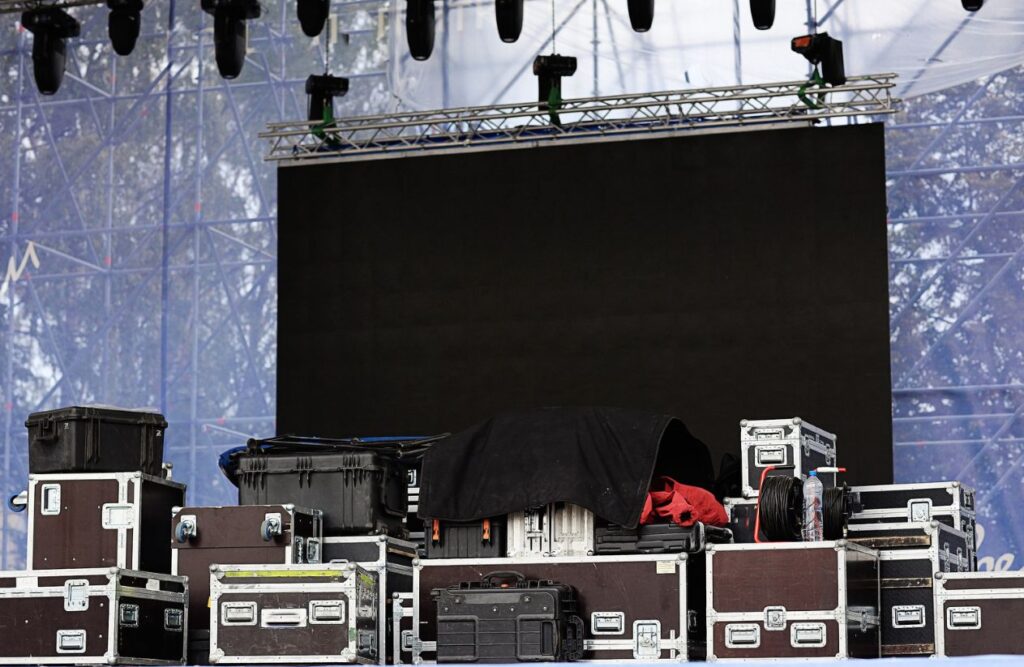
When it comes to stage setup for events, the importance of sound cannot be overstated. It’s the invisible force that can elevate an event to unforgettable heights or drag it down to a forgettable experience. It’s more than just volume; it’s about clarity, immersion, and emotional connection.
Here’s a breakdown of how to master the art of sound:
- Understanding Venue Acoustics: Every venue has its own unique sonic fingerprint. Hard surfaces like concrete and glass reflect sound, creating echoes and reverberation, while soft surfaces like carpets and drapes absorb sound, which can lead to a muffled effect. Before choosing any equipment, take the time to understand the acoustics of your venue. Walk around the space, clap your hands, and listen to how sound travels. Consider hiring an acoustician for complex venues to get a professional assessment and recommendations.
- Choosing the Right Audio Equipment: The size and type of your event will dictate the kind of audio equipment you need. For a small, intimate gathering, a simple PA system with a couple of speakers and microphones might suffice. For a large outdoor concert, you’ll need a much more powerful system with line array speakers, subwoofers, and a sophisticated mixing console. Consider these factors:
- Speaker Type: Different speakers are designed for different purposes. Main speakers project sound to the audience, while monitor speakers allow performers to hear themselves. Subwoofers provide low-frequency bass.
- Microphones: Choose microphones based on the source (vocals, instruments) and the environment. Dynamic microphones are durable and good for loud stages, while condenser microphones are more sensitive and better for studio settings or quiet performances.
- Mixing Console: This is the control center of your sound system. It allows you to adjust the volume, tone, and balance of different audio sources.
- Amplifiers: These provide the power to drive your speakers.
- Practical Tips for Speaker Placement: Strategic speaker placement is crucial for achieving balanced sound coverage and avoiding feedback. Here are some tips:
- Position main speakers to cover the majority of the audience area.
- Elevate speakers on stands to ensure sound travels over the heads of the audience.
- Angle speakers slightly downwards to direct sound towards the listening area.
- Use fill speakers to cover areas that aren’t adequately reached by the main speakers.
- Avoid placing speakers too close to walls or corners, as this can cause sound reflections and distortion.
- The Art of the Sound Check: A thorough sound check is essential for identifying and addressing any potential audio problems before the event begins.
- Test every microphone, speaker, and instrument individually.
- Check for feedback, distortion, and other audio issues.
- Adjust volume levels and equalization settings to achieve a balanced and clear sound.
- Have performers or speakers run through their sets to get comfortable with the sound system and make any necessary adjustments.
- Exploring Advanced Audio Techniques: For a truly immersive experience, consider exploring advanced audio techniques:
- Soundscaping: This involves creating a sonic environment that enhances the atmosphere of your event.
- Immersive Audio: Systems like Dolby Atmos and surround sound can create a three-dimensional audio experience that envelops the audience.
You can also read our article about “Unlock the Power of Augmented Reality in Events”
Lighting That Captivates: Designing for Ambiance and Impact
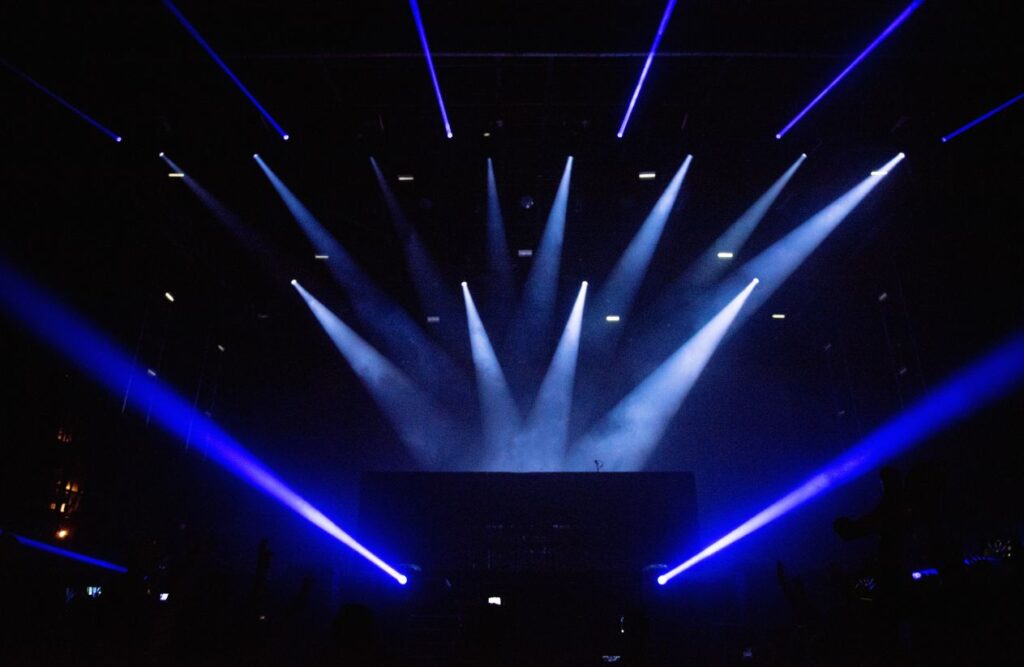
Lighting is a powerful tool in any stage setup. It’s more than just illumination; it’s a way to sculpt the visual experience, evoke emotions, and direct the audience’s attention. Understanding the psychology of lighting is key to creating the desired mood and impact.
- The Psychology of Light: Different colors and intensities of light can trigger different emotional responses. Warm colors like red and orange can create a sense of energy and excitement, while cool colors like blue and green can promote calmness and relaxation. The brightness of the light can also affect mood, with bright light generally associated with happiness and energy, and dim light with intimacy and mystery.
- Types of Lighting and Their Applications: There are several types of lighting, each with its own unique purpose:
- Ambient Lighting: This provides overall illumination for the stage and venue. It sets the base mood and ensures that the space is visible.
- Accent Lighting: This is used to highlight specific elements on the stage, such as performers, props, or architectural features. It adds depth and visual interest.
- Spotlighting: This is a focused beam of light used to draw attention to a particular person or object. It’s often used to highlight key moments or performances.
- Creating Different Lighting Scenarios: By combining different types of lighting, you can create a variety of lighting scenarios:
- Elegant: Soft, warm ambient lighting with subtle accent lighting can create an elegant and sophisticated atmosphere.
- Energetic: Bright, colorful lighting with dynamic movement can create an energetic and exciting atmosphere.
- Intimate: Dim, warm lighting with focused spotlights can create an intimate and romantic atmosphere.
- Innovative Lighting Technologies: Modern lighting technology offers a wide range of creative possibilities:
- Projection Mapping: This technique involves projecting images or videos onto surfaces, creating dynamic and immersive visual displays.
- Interactive Lighting: This type of lighting can respond to sound, movement, or other stimuli, creating a dynamic and engaging experience.
- Safety First: When designing your stage lighting, safety should be a top priority. Ensure that all lighting equipment is properly installed and secured, and that there are no tripping hazards. Use appropriate safety gear when working with lighting equipment, and be aware of electrical safety regulations.
Visual Storytelling: Engaging Your Audience with Technology
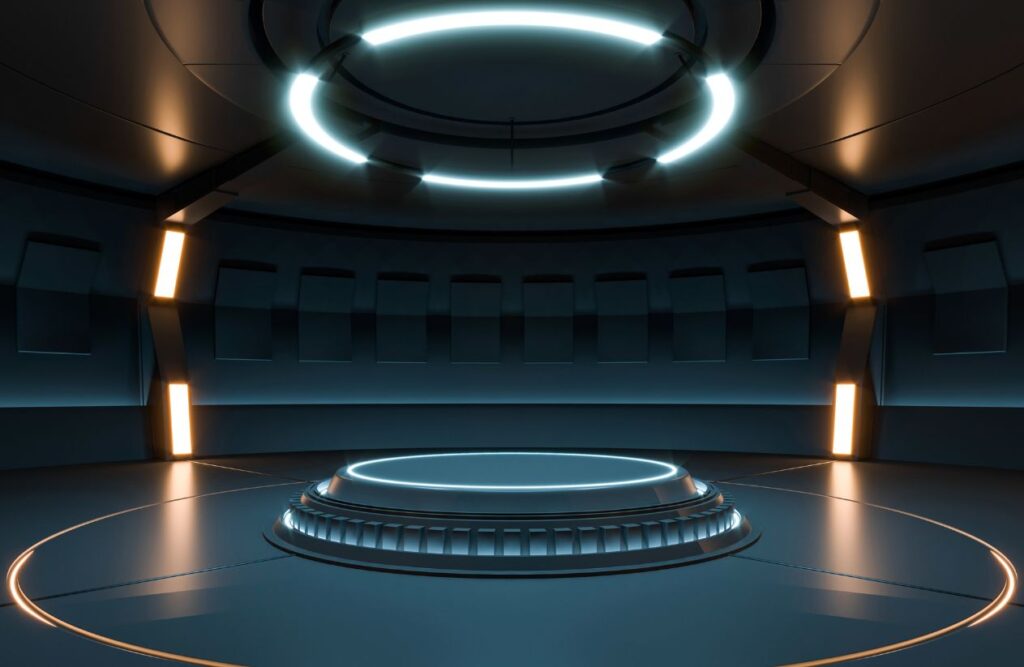
We live in a visually driven world. When it comes to events, technology offers incredible tools to captivate your audience and create truly unforgettable experiences. It’s about going beyond static presentations and using dynamic visuals to tell a story, evoke emotions, and leave a lasting impression.
Here’s how you can leverage technology for visual storytelling:
- A Range of Visual Technologies:
- LED Walls: These large-scale displays offer vibrant colors, high resolution, and the ability to show dynamic video and graphics. They can transform a stage backdrop into a living, breathing canvas.
- Projection Mapping: Imagine turning the stage itself, or even the entire venue, into a screen. Projection mapping allows you to project images and videos onto any surface, creating stunning, three-dimensional visual experiences.
- AR/VR Experiences: Augmented and Virtual Reality can take your audience on a journey. AR can overlay digital elements onto the real world, creating interactive and informative experiences. VR can transport your audience to entirely different environments, making the impossible possible.
- Interactive Displays: Touch screens and other interactive elements can give the audience control over what they see and experience, making them active participants in the story.
- Creating Compelling Visual Content: The technology is only as good as the content it displays. Your visuals should:
- Align with your event’s message and brand: Keep a consistent visual style and tone.
- Tell a story: Use visuals to support your narrative and create an emotional connection with the audience.
- Be high-quality: Use professional graphics, videos, and animations.
- Be concise and impactful: Keep visuals brief and to the point, focusing on key messages.
- Enhancing Storytelling and Engagement:
- Use visuals to set the scene, introduce characters, and create dramatic tension.
- Incorporate live video feeds to capture audience reactions and make remote attendees feel more involved.
- Integrate interactive elements, such as polls, quizzes, and Q&A sessions, to keep the audience engaged.
- Integrating Social Media and Live Feeds:
- Display social media feeds to encourage audience participation and create a sense of community.
- Use live streaming to reach a wider audience and extend the reach of your event.
The Final Countdown: Perfecting Your Pre-Event Run-Through
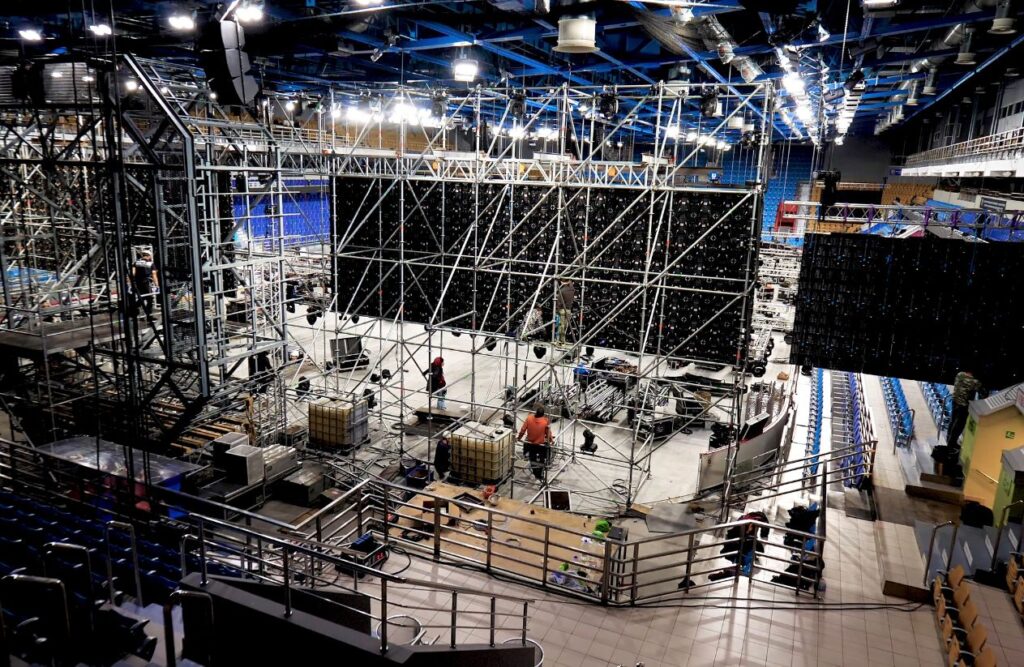
The success of any event, especially when it comes to a well-executed stage setup for events, hinges on the final pre-event run-through. This is your last chance to catch any potential snags, ensure everything flows smoothly, and fine-tune all the details that will contribute to a memorable experience.
Here’s a breakdown of how to make that final run-through count:
- Detailed Checklist for a Flawless Run-Through:
- Technical Equipment:
- Test all audio equipment (microphones, speakers, amplifiers, mixing board)
- Check all lighting cues and transitions.
- Verify all video displays, projectors, and screens.
- Confirm all connections and cables are secure.
- Test any special effects (lasers, fog machines, etc.).
- Ensure all power sources are stable and sufficient.
- Stage Setup:
- Confirm the placement of all props, furniture, and set pieces.
- Check sightlines from all audience areas.
- Verify stage dimensions and layout.
- Ensure all signage and branding elements are in place.
- Content and Timing:
- Run through the entire program, including speeches, performances, and transitions.
- Check the timing of each segment to ensure the event stays on schedule.
- Verify all visual content (slides, videos, graphics) is displayed correctly.
- Confirm all cues for performers and speakers.
- Crew and Staff:
- Brief all crew members on their roles and responsibilities.
- Confirm communication channels (walkie-talkies, headsets).
- Review emergency procedures and safety protocols.
- Ensure all staff members are familiar with the event layout and schedule.
- Contingency Plans:
- Have backup plans in place for technical malfunctions.
- Prepare for potential delays or unexpected issues.
- Identify key personnel responsible for handling emergencies.
- Technical Equipment:
- Troubleshooting Tips for Unexpected Issues:
- Audio Problems:
- Carry spare microphones, cables, and adapters.
- Have a sound technician on standby to troubleshoot issues.
- Know how to quickly switch to a backup audio source.
- Lighting Problems:
- Have spare bulbs and fuses on hand.
- Designate someone to monitor the lighting system throughout the event.
- Know how to override lighting cues manually if necessary.
- Visual Problems:
- Have backup copies of all visual content.
- Test all displays and projectors thoroughly before the event.
- Know how to quickly switch to a backup display if needed.
- Power Outages:
- Have a backup power source (generator) available.
- Identify essential equipment that needs to be powered during an outage.
- Have battery powered lights available
- Last Minute Changes:
- Have a plan in place to communicate changes quickly and effectively to all parties involved.
- Have extra materials on hand
- Audio Problems:
- The Importance of Communication and Coordination: Clear and consistent communication is paramount for a successful event.
- Establish a clear chain of command and communication protocols.
- Use technology to facilitate communication (e.g., group messaging apps, project management software).
- Hold regular meetings before and during the event to keep everyone informed.
- Encourage open communication and feedback among team members.
- The Role of Technology in Streamlining the Pre-Event Process: Technology can be a game-changer for managing the pre-event run-through:
- Project management software: Tools like Asana or Trello can help you organize tasks, track progress, and assign responsibilities.
- Digital checklists: Create and share checklists electronically to ensure that all tasks are completed.
- Communication platforms: Use apps like Slack or Microsoft Teams to facilitate real-time communication among team members.
- Show control systems: These systems allow you to synchronize and automate different aspects of the stage setup, such as lighting, sound, and visuals.
Related Content: Unlock the Future of Event Planning with AI
Conclusion
Creating a memorable event is an art, and mastering the stage setup is a crucial part of that artistry. By understanding your audience, crafting impeccable sound and lighting, leveraging technology for visual storytelling, and perfecting that final run-through, you’ll be well on your way to producing events that leave a lasting impact.
Remember, it’s the combination of these elements, working in harmony, that truly elevates an event from good to unforgettable. So, go forth and create something extraordinary!
What are your favorite stage setup tips? Share them in the comments below!

